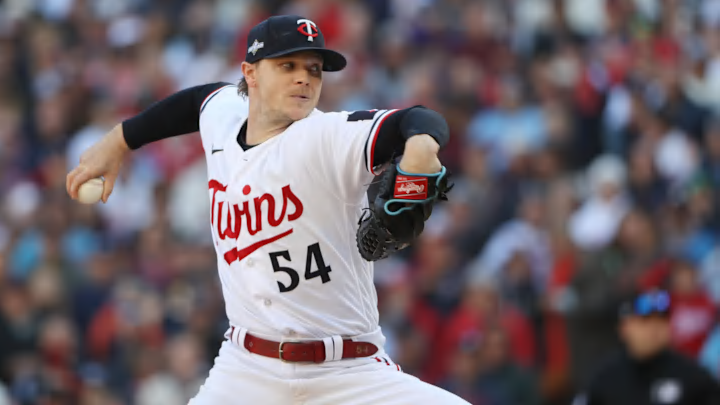The deal with the St. Louis Cardinals reportedly agreed to by free agent pitcher Sonny Gray represents a surprising turn toward logic in what started out to be a profligate market for free agent pitching.
Gray is reported ready to sign a three-year, $75 million contract to join the St. Louis rotation in 2024. With the Minnesota Twins in 2023, he was 8-8 with a 2.79 ERA in 32 starts encompassing 184 innings.
Gray is entering his age-34 season.
From a performance standpoint, the Sonny Gray contract is far more logical and more justifiable than the seven-year, $172 million deal the Philadelphia Phillies gave Aaron Nola to remain with them a few weeks ago.
During the 2023 season, Gray and Nola were two of 118 pitchers who made at least 20 starts. For lack of a better term, we can classify these 118 as "rotation starters."
There was a wide variation in their salaries, all the way from the major league minimum to the $43.333 million pulled down by Max Scherzer and Justin Verlander. The average, however, worked out to $7.89 million.
Those 118 rotation starters produced an average of 2.04 WAR for their teams. Again there was a wide spread, from Adam Wainwright’s -2.0 in St. Louis to Gerrit Cole’s +7.4 for the Yankees.
But it’s the broad 2.04 WAR average we’re interested in. Put that up against the $7.89 million average salary and we can assert that on average, the current baseball market assesses each WAR produced by a major league pitcher to be worth about $3.867 million in salary.
The terms of Gray’s deal have not yet been revealed, but presumably he will earn about $25 million in 2024, again in 2025 and again in 2026. In order for his on-field performance to justify that salary, Gray would have to project to be about a 6.3 WAR pitcher for St. Louis.
Gray didn’t reach that level of exceptionality in 2023, but he did get to 5.3 WAR, which made him a $20.5 million pitcher. And, of course, that number only considers on-field value. The Cardinals are also paying Gray for other things; his ability to sell tickets, to move merchandise, to promote the team and to re-establish any franchise credibility lost during the dismal 2023 St. Louis season.
Unlike Nola, who the numbers indicate has become a slightly above average starter, Gray remains a, legitimate front-liner. In 2023, only Gerrit Cole, Blake Snell and Logan Webb had higher WARs than Gray’s +5.3.
At $25 million per season, the Gray contract then begins to approach rationality, which when high-end free agency is involved is really all a team can ask.
The contract suggests a hint of sanity in a pitching market that threatened to go off the deep end with the deal given Nola by the Phillies. Based on his 2023 performance, Nola deserved something closer to $8 million to $10 million per season, not the $27 million he got.
But Nola’s deal was driven by Philadelphia’s perception of the market cost of retaining their long-time ace, an outcome management viewed as essential to retaining fan buy-in at whatever cost was necessary.
Lacking ties to Gray, the Cardinals were able to make a far more rational judgment in their pursuit of rotation help. That rationality was also aided by the knowledge that if they didn’t get Gray, plenty of other arms remained.
If there is a surprise, it is that Gray would accept a deal so modest by comparison with the Nola precedent. The fact that Gray is three years older doubtless had something to do with it, but the absence of any long-term connection between Gray and his former team, the Twins, was also a factor. That made it less imperative for president Derek Falvey and GM Thad Levine to walk away from a player on their roster just two seasons, and less simple for Gray's agent to drive up his player's asking price.
When you are judging player value (especially prospectively) being in position to approach the question unemotionally can be a big advantage. The Twins and Cardinals were both able to do that with Gray, something the Phillies were unable to do with Nola.
That may have made millions of dollars of difference to the teams.
